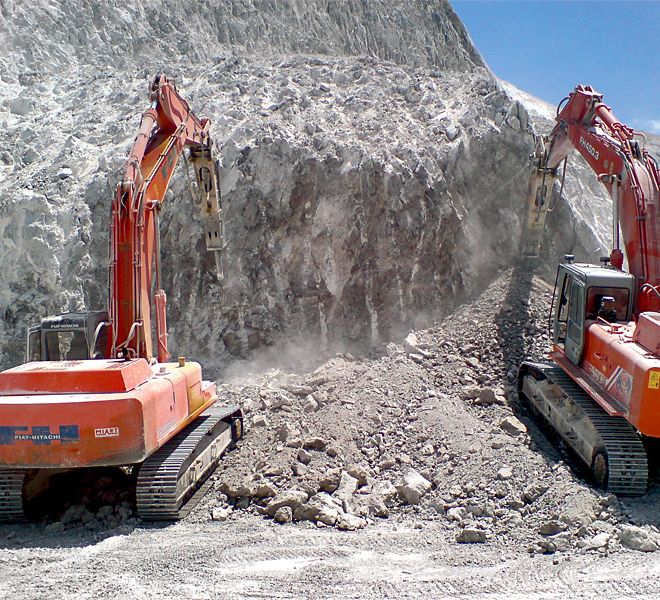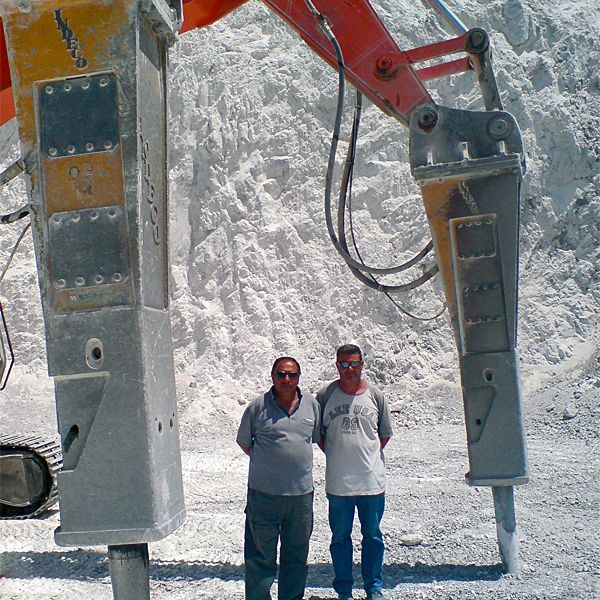Indeco breakers in quarries: the right choice
Indeco breakers are proving more popular for primary winning in quarries than ever before. Let's find out why.
Tucked into the steep tree-covered hills near Potenza in Southern Italy, lies the small, highly efficient Lopardo quarry. Output from the quarry is 150,000 m3/year and the current site has around five years worth of production left.
However, the Lopardo family has already started the applications process for a new site nearby. The stone from the quarry is used for an array of applications, with much of the production going into the road construction market. Though they have been using Indeco breakers since 1991 for secondary winning, it is only in the last two to three years that the firm has switched from drilling and blasting to using Indeco breakers for primary winning.
There were several reasons for this switch. Increases in explosives prices meant that blasting no longer had any cost benefits, while increasingly tough restrictions due to security and environmental requirements meant that it was becoming too complex to organise. As the firm had plenty of good experience using hammers for secondary breaking, it had become apparent that it would be far easier to start using them for primary winning as well. There have been knock-on benefits too. Switching to primary winning with breakers delivers better quality aggregates containing fewer micro-cracks. And there are environmental benefits too, with reductions in noise, vibration and the risk of fly-rock.
In fact, hydraulic breakers have been used in other European quarries for primary winning for at least 15 years, this has generally been due to environmental factors such as when a site is close to housing. But, as the Lopardo quarry is showing, primary winning with the latest generation of more reliable breakers is now an economically favourable option too that also helps reduce the bureaucracy involved with blasting. Despite the abrasive stone, these breakers have proven reliable in the conditions, achieving good productivity and utilisation.
The huge Indeco HP 9000 (mounted on a 45 tonne class Fiat-Hitachi FH450-3 excavator) has now clocked 3,000 hours, while the newer of the Indeco HP 5000 has reached 4,000 hours. Although the 9000 is not a low noise unit, the sound levels it produces are considerably lower than for earlier-generation units of this size.
Indeco‘s marketing manager, Michele Vitulano, explains that this has been achieved by putting special polyurethane seals at the base of the hammer unit, which reduce internal vibration around the cylinder area and have the added benefit of extending component wear life. This update has been so successful that it is now a standard feature on all the larger Indeco breakers.









